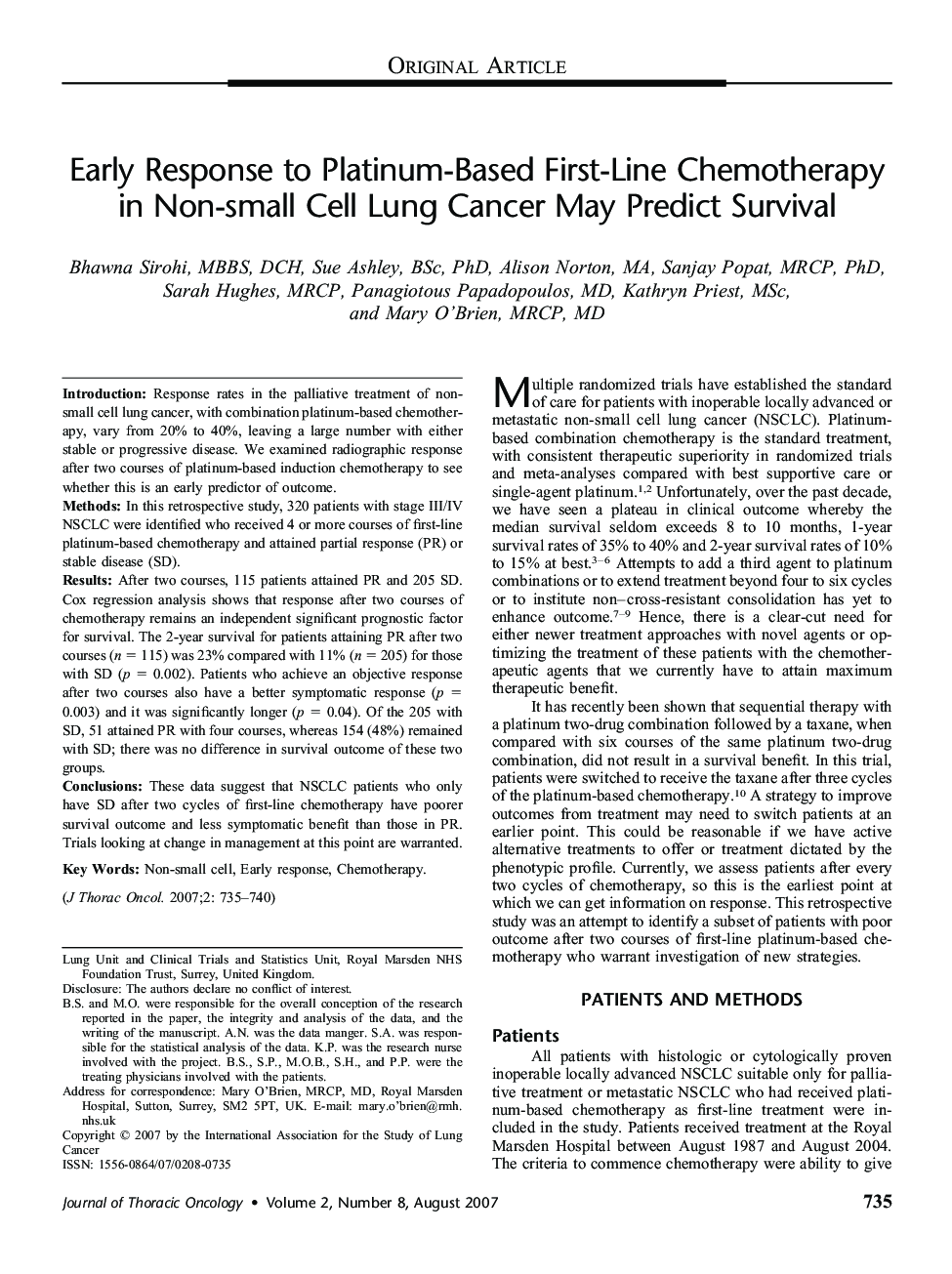| Article ID | Journal | Published Year | Pages | File Type |
|---|---|---|---|---|
| 3992581 | Journal of Thoracic Oncology | 2007 | 6 Pages |
IntroductionResponse rates in the palliative treatment of non-small cell lung cancer, with combination platinum-based chemotherapy, vary from 20% to 40%, leaving a large number with either stable or progressive disease. We examined radiographic response after two courses of platinum-based induction chemotherapy to see whether this is an early predictor of outcome.MethodsIn this retrospective study, 320 patients with stage III/IV NSCLC were identified who received 4 or more courses of first-line platinum-based chemotherapy and attained partial response (PR) or stable disease (SD).ResultsAfter two courses, 115 patients attained PR and 205 SD. Cox regression analysis shows that response after two courses of chemotherapy remains an independent significant prognostic factor for survival. The 2-year survival for patients attaining PR after two courses (n = 115) was 23% compared with 11% (n = 205) for those with SD (p = 0.002). Patients who achieve an objective response after two courses also have a better symptomatic response (p = 0.003) and it was significantly longer (p = 0.04). Of the 205 with SD, 51 attained PR with four courses, whereas 154 (48%) remained with SD; there was no difference in survival outcome of these two groups.ConclusionsThese data suggest that NSCLC patients who only have SD after two cycles of first-line chemotherapy have poorer survival outcome and less symptomatic benefit than those in PR. Trials looking at change in management at this point are warranted.
